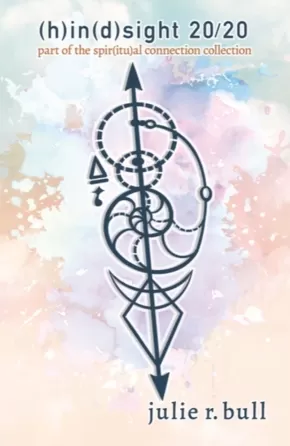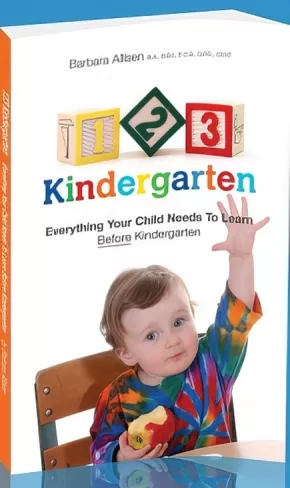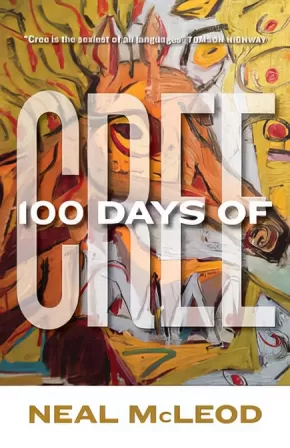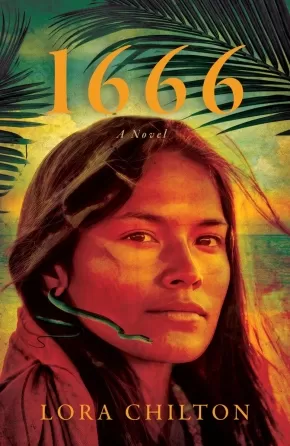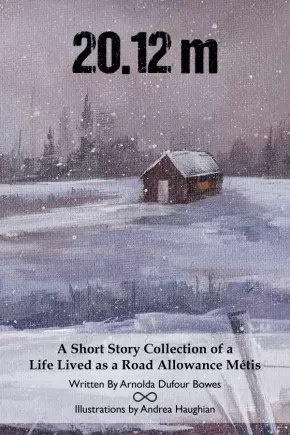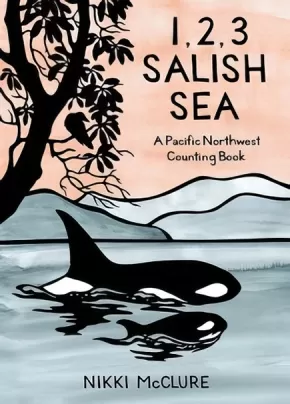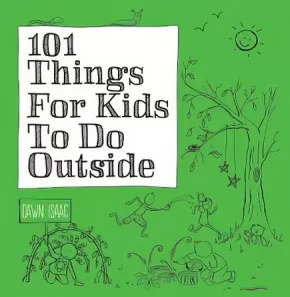
English
Books (8)
'Québec Was Born in My Country!': A Diary of Encounters between Indigenous and Québécois Peoples
$32.99
Artists:
Format:
Paperback
Text Content Territories:
Indigenous Canadian;
Reading Level: N/A
ISBN / Barcode: 9781771126779
Synopsis:
Synopsis:
In 2004, settler scholar Emanuelle Dufour became aware of a “silence” with regard to residential schools and ongoing colonialism, systemic racism, inadequate curricular material in schools, and sought to find answers by meeting with community members, Elders, spokespeople, students, professionals, families, and many others.
Dufour is an artist at heart, and the product of her findings became a “carnet de rencontres,” a notebook of coming-togethers, in which her fifty+ interlocutors are rendered “speaking,” quite literally, on and within the pages, while advocating for the importance of Indigenous cultural security within the education system. Their presence is undeniable, and their voices carry the narrative.
Originally published as C'est le Québec qui est né dans mon pays!, this translation creates a bridge, from one colonial language to another, that will enable conversations across and beyond spaces and languages. It aims to shed light on colonial mainstream narratives in Canada and, more precisely, in Québec, by considering the politics of linguistic hegemony and the double exiguity that Indigenous peoples often find themselves in, calling for a better understanding of how the province’s specific colonial history has had a profound and continued impact on its 11 Indigenous Nations. This book’s unusual (academically-speaking) form as a “carnet”, or diary, becomes an anthology of statements of witnessing, which, coupled with the illustrative narrative, bears its decolonizing mission. Quebec Was Born in My Country! ultimately is about foregrounding common and collective experiences, with the crucial goal of furthering education.
Educator & Series Information
This graphic novel that explores colonial history in Québec is part of the Indigenous Imaginings series.
Translated by Sarah Henzi.
Additional Information
216 pages | 9.00" x 12.00" | Paperback
(h)ind(d)sight 20/20
$19.95
Format:
Paperback
Text Content Territories:
Indigenous Canadian; Inuit;
Reading Level: N/A
ISBN / Barcode: 9781990297168
Synopsis:
Synopsis:
J. R. Bull’s debut poetry book, (h)in(d)sight 2020, is the first in the Spir(itu)al Connection Collection. Julie’s lyrical and whimsical use of language provides ponderings for readers as they are taken on a journey of self-discovery. Part - memoir, manifesto, and musings, (h)in(d)sight 2020 is an inward journey and an outward Call to Action. A heart and soul voyage toward decolonization of the mind. Challenging the status quo and perceived societal norms, (h)in(d)sight 2020 demonstrates moving forward, together.
Additional Information
58 Pages | Paperback
#IdleNoMore: And the Remaking of Canada
$27.95
Format:
Paperback
Text Content Territories:
Indigenous Canadian;
Grade Levels: 12; University/College;
ISBN / Barcode: 9780889773424
Synopsis:
Synopsis:
Idle No More bewildered many Canadians. Launched by four women in Saskatchewan in reaction to a federal omnibus budget bill, the protest became the most powerful demonstration of Aboriginal identity in Canadian history. Thousands of aboriginal people and their supporters took to the streets, shopping malls, and other venues, drumming, dancing, and singing in a collective voice.
It was a protest against generations of injustice, a rallying cry for cultural survival, and a reassertion of Aboriginal identity.
Idle No More lasted for almost a year, and then the rallies dissipated. Many observers described it as a spent force. It was anything but. Idle No More was the most profound declaration of Indigenous identity and confidence in Canadian history, sparked by Aboriginal women and their supporters, sustained by young Indigenous peoples, filled with pride and determination. When the drums slowed, a new and different Canada was left in its wake. Partially stunned by the peaceful celebrations, but perplexed by a movement that seemed to have no centre and no leaders, most Canadians missed the point.
Through Idle No More, Aboriginal people have declared that they are a vital and necessary part of Canada's future. The spirit of the drumming, singing and dancing lives on in empowered and confident young Aboriginal people who will shape the future of this country for decades to come.
#IndianLovePoems
$17.95
Format:
Paperback
Text Content Territories:
Indigenous Canadian;
ISBN / Barcode: 9781927426999
Synopsis:
Synopsis:
Covering Indigenous adventures from Wahpole Island to Northern Saskatchewan to the coast of Vancouver, #IndianLovePoems is a poetry collection that delves into the humour and truths of love and lust within Indigenous communities. Sharing stories in search of The One, or even better, that One-Night-Stand, or the opening of boundaries -- can we say medicine wheel -- this collection fearlessly sheds light on the sharing and honesty that comes with discussions of men, women, sex, and relationships, using humour to chat about the complexities of race, culture and intent within relationships. From discovering your own John Smith to sharing sushi in bed, #IndianLovePoems will make you smile, shake your head, and remember your own stories about that special someone.
Reviews
"These are resolutely modern poems written for the great variety of women and LGBTQ2S people of today. They turn the stereotypes of the “Vanishing Indian” and “unchanging cultures” upside down with mentions of campus life, sexting, Tinder, and of course Twitter (the poems have non-serialized numbers with hashtags). There is power in Campbell’s creative use of imagery and everyday language. #IndianLovePoems is a must-read from a very exciting new voice who will undoubtedly become an established name." - Sylvie Vranckx, Canadian Literature: A Quarterly of Criticism and Review
Additional Information
96 pages | 6.00" x 9.00"
1 2 3 Kindergarten
$14.95
Format:
Paperback
Grade Levels: Kindergarten;
ISBN / Barcode: 9781466480391
Synopsis:
Synopsis:
1 2 3 Kindergarten is a down-to-earth, practical guide to help parents, caregivers and educators ensure children's readiness for kindergarten. Written by a kindergarten teacher and parent, this award-winning book, has tips, explanations, short-cuts and fun. It includes ideas that use resources already available at home or in child care centers and strategies to incorporate learning time into busy, active days. An easy-to-use developmental checklist and rating scale, guidance for the this-year-or-next-year debate, and suggestions for home-school transition make this a birth-to-kindergarten resource.
Additional Information
114 pages | 5.98" x 9.02" | Paperback
100 Days of Cree
$24.95
Format:
Paperback
Text Content Territories:
Indigenous Canadian; First Nations; Cree (Nehiyawak);
ISBN / Barcode: 9780889774292
Synopsis:
Synopsis:
As an Elder once said, "Learn one Cree word a day for 100 days, and emerge a different person."
In 100 Days of Cree, Neal McLeod offers us a portal into another way of understanding the universe--and our place within it--while demonstrating why this funny, vibrant, and sometimes salacious language is "the sexiest of them all" (according to Tomson Highway).
Based on a series of Facebook posts, the 100 short chapters or "days" in the book present a chain of related words, some dealing with the traditional--the buffalo hunt, the seasons--and others cheekily capturing the detritus of modern life--from Internet slang to Johnny Cash songs to Viagra.
The result is both an introduction to the most widely spoken Indigenous language in Canada and the opportunity to see the world, and ourselves, in another way.
Reviews
"The nonfiction book is divided into 100 themes and offers Cree words and English explanations for everything from traditional subjects such as powwows and medicine to modern subjects such as Facebook and Star Wars. It also includes a guide to pronunciation written by Arok Wolvengrey, a linguist and the author of a Cree-English dictionary. 'When we think about indigenous languages, there’s a part of us that thinks they’re dying languages, ' URP publisher Bruce Walsh said. 'And then this manuscript comes in that demonstrates a living, vital language.' McLeod said that he and Wolvengrey worked to keep a balance between traditional usage and modern adaptations. 'To revitalize our languages, we have to do two things: we have to document the classical terminology, because within that terminology are all of our metaphors and idioms; but we also have to think of how to put old words together, to coin words, to describe the contemporary world.'" — Laura Godfrey, Publishers Weekly
Additional Information
325 pages | 5.50" x 7.00"
1666: A Novel
$25.95
Format:
Paperback
Text Content Territories:
Indigenous American; Native American; Patawomeck Indian Tribe of Virginia (Potomac People);
Reading Level: N/A
ISBN / Barcode: 9781960573957
Synopsis:
Synopsis:
A Fictional Recounting of the Survival Story of Patawomeck Tribe of Virginia
The story has been remembered within the Patawomeck tribe for generations, but is largely unknown outside of the tribe until now. Author Lora Chilton, a tribal member through the lineage of her father, has created this powerful fictional retelling.
The story follows three Indigenous Patawomeck women who lived through the decimation of their tribe by land hungry colonists in the summer of 1666, the massacre of their men, the harrowing march south where they and their children were sold and transported to Barbados via slave ship, and, eventually, their brave escape back to Virginia. It is because of these women that the tribe is in existence to this day.
This work of historical fiction is based on oral tradition, interviews with tribal elders, written colonial records and extensive research by the author, including study of the language. The book uses Indigenous names for the characters and some Patawomeck words to honor the culture and heritage that was erased when European colonization of the Americans began in the 16th century.
Reviews
"Packed with Indigenous culture and customs and sprinkled with tribal terminology, the narrative is vivid, magnetic, and chilling. The author is herself a Patawomeck descendant, and she’s combined scant available written records with tribal oral history to inform her creation of two emotionally powerful, vibrant female protagonists….plenty of action, tears, cheers, and historical detail work to keep the pages turning. A disturbing, absorbing, and valuable addition to the literature of cruelty inflicted upon Indigenous peoples."—Kirkus Reviews
“Focusing on the experiences of three Patawomeck women in the latter half of the seventeenth century, Chilton, in 1666 : A Novel, draws on contemporary scholarship regarding Patawomeck and Virginia Algonquian history, culture, and language to develop her characters and add depth to their stories. It is refreshing to read a story about Virginia Indian women in the seventeenth century that avoids the glamorized, sexualized, and racialized Pocahontas mythology and instead centers on the experiences of those everyday people who may not have been so well-known to colonizers but are the true ancestors of most Virginia Indians…. A fast-paced novel that takes the reader through numerous Atlantic landscapes from the traditional Patawomeck homelands along Potomac Creek, to Barbados, to New York, 1666 illustrates the interconnectedness of the early Modern world and its people." —Dr. Brad Hatch, Patawomeck Tribal Historian and Tribal Council Member
"In this debut novel by Lora Chilton, 1666: A Novel, we are introduced to a history based account of two brave Indigenous women of the Patawomeck tribe, who are abducted from their native Virginia home in 1666 and enslaved under the brutal 'Master' and 'Mistress' of the plantations in Barbados. A page-turning marvel of a historical novel! Otherwise, the shameful erasure of the Patawomeck would have been maintained." —Diana Y. Paul, author of Things Unsaid
Additional Information
224 pages | 5.32" x 8.46" | Paperback
20.12m: A Short Story Collection of a Life Lived as a Road Allowance Métis
$20.00
Artists:
Format:
Paperback
Text Content Territories:
Indigenous Canadian; Métis;
ISBN / Barcode: 978-1-926795-99-7
Synopsis:
Synopsis:
20.12m: A Short Story Collection of a Life Lived as a Road Allowance Métis celebrates and acknowledges the humble living conditions of Métis Road Allowance families and it exemplifies their grit and tenacity to survive and indeed succeed in the face of so many hardships. “20.12m” refers to the narrow width of many of the road allowances throughout the prairies. This unoccupied crown land became one of the meagre options for many impoverished Métis families as so few owned land.
In this passionate coming of age book, Arnolda Dufour Bowes honours the true-life experiences of her father, Arnold Charles Dufour, a resident of the Punnichy, Saskatchewan Road Allowance community. The strength of the oral tradition has kept these stories solidly in place in Arnolda’s memory. Weaving true elements with those drawn from her own creativity, these five engaging stories share a lived experience that is little-known to most Canadians. This collection of cherished remembrances of this Métis family will also strongly resonate with many other Métis families who lived similar lives. In keeping with the family focus, Arnolda’s sister, Andrea Haughian, skillfully complements these poignant stories with expressive illustrations, which both honour and richly portray road allowance life.
Educator Information
Recommended by publisher for secondary, post-secondary, and adult readers.
Additional Information
Paperback
Teen Books (1)
Breaking Through: Heroes in Canadian Women's Sport
$12.95
Format:
Paperback
Text Content Territories:
Indigenous Canadian;
ISBN / Barcode: 9781459413726
Synopsis:
Synopsis:
This book highlights the achievements of Canadian women sports stars — the role models of today's young female athletes. They fought for the right to compete in sports traditionally dominated by men and proved that women's sports are just as competitive and exciting to watch as men's. Spanning decades, Breaking Through focuses on seven sports and the women who made them their own, including well-known legends such as soccer player Christine Sinclair, who brought women's soccer in Canada into the limelight, and hockey player Hayley Wickenheiser, the longest-serving member of Canada's National team and five-time Olympic medalist. Readers will also see basketball, bobsleigh and rugby represented and learn the stories of less well-known athletes such as Indigenous Cross-country skiers Sharon Anne and Shirley Firth, who faced down prejudice, and Carol Hunyh, who brought home Canada's first Olympic gold medal in women's wrestling.
Educator & Series Information
Recommended Ages: 12-18.
Some, but limited, Indigenous content.
This work is part of the Recordbooks series, which includes sports biographies that highlight key social issues for reluctant readers.
Additional Information
144 pages | 4.25" x 7.00"
Kids Books (6)
ON SALE - Cedar School Decodables: Elder Jen’s Story
 $6.80 $7.99
$6.80 $7.99

Artists:
Format:
Paperback
Text Content Territories:
Indigenous Canadian; First Nations; Mi'kmaq (Mi'gmaq); Listuguj Mi'gmaq First Nation;
Grade Levels: Kindergarten; 1;
ISBN / Barcode: 978-1-77174-654-0
Synopsis:
Synopsis:
In this story, it is the National Day for Truth and Reconciliation. Jen shares her story of healing with the students.
For a long time, Mi’gmaq were not allowed to speak their language at school. Today, many Mi’gmaq are reconnecting with their language.
How do you honour the National Day for Truth and Reconciliation?
Educator Information
Recommended for ages 4-7, for use in kindergarten and Grade 1 classrooms.
Cedar School Decodables is divided into six sets, which increase in word count and complexity of sentence structure. Elder Jen’s Story is in Set 6 – R-Controlled Vowels, and reviews er, ir, and ur. Books in Set 6 have 110-125 words.
Readers should be familiar with the concepts included in Set 1 to Set 6:
- consonants
- beginning and end blends
- short, long, and r-controlled vowels
- digraphs
- suffixes and ending spelling patterns
- a /o/
- s – /s/ and /z/
- VC-CV, V/CV, VC/V, and compound words
- possessives
Series Information
Welcome to Cedar School! Join Liv, Tom, Gus, and Bell as they learn on the land and explore Mi’gmaw teachings with their teacher, Miss Sam, and the school’s Mi’gmaw Elder, Jen. With charming illustrations and simple storylines, this decodable series engages students as they practise their reading skills. Each book includes a pre-reading review of non-decodable words, and many of the books introduce special words related to Indigenous teachings. Talking Together prompts facilitate discussions led by the reading teacher.
Developed in partnership with Dyslexia Canada, Cedar School Decodables is a series of 20 decodable books for young readers. Designed for students who have previously learned short vowel and consonant sounds, additional phonic skills are developed progressively throughout the series.
The series will be accompanied by Cedar School Decodables Teacher’s Guide and a series of four picture books, which will be available at a later date.
Additional Information
16 pages | 6.5” x 5.5” | Paperback | ISBN: 978-1-77174-654-0
ON SALE - Strong Science - Animals: The Ducks Fly Away
 $6.38 $7.50
$6.38 $7.50

Artists:
Format:
Paperback
Text Content Territories:
Indigenous Canadian;
Grade Levels: Kindergarten; 1;
ISBN / Barcode: 978-1-77174-617-5
Synopsis:
Synopsis:
This story begins with the ducks seeing the leaves on the trees turning red and yellow. How do you think this story ends?
There are four seasons in the year: winter, spring, summer, and fall. Which season is this story about?
Educator & Series Information
Recommended for grade 1 students, but may also be useful in kindergarten classrooms.
Strong Science - Animals is a language-based science series for primary students featuring animals that all Canadian students will recognize. Photographs and Indigenous artwork illustrate the series. Common learning objectives in science curricula across Canada are addressed, and suggestions for extending the learning to other curriculum areas, including Indigenous cultural awareness, language arts, math, and art, are included in the teacher’s guide. The sixteen books in this series are grouped into four levels that increase in complexity, designed to accommodate students with various reading abilities within a classroom. This feature facilitates the use of this series in literacy programs along with the Strong Readers series.
The Ducks Fly Away is an EP3 (Early Primary 3) book in the Strong Science - Animals series. Font size decreases as language complexity and word count increase across levels: EP1 books have approximately 40 words, EP2 books have approximately 60 words, EP3 books have approximately 80 words, and EP4 books have approximately 100 words.
A teacher's guide for Strong Science - Animals is available: Strong Science - Animals: Teacher's Guide
Authenticity Note: This book has received the Indigenous Text label because the author is Indigenous (Lakota) and the featured animal holds cultural significance in many Indigenous cultures. The engaging story provides factual information in an easy-to-read format for children to learn science concepts and build literacy skills. It promotes respect for animals and Mother Earth, and its illustrations communicate additional cultural information through Lakota symbolism and designs. Further cultural connections are identified in the teacher's guide. Refer to the guide to explore the book's Indigenous connections fully. It is up to readers to determine if the book will work as a stand-alone authentic Indigenous text for their purposes.
Additional Information
16 Pages | 6.5" x 5.5" | Paperback | ISBN: 978-1-77174-617-5
1,2,3 Salish Sea: A Pacific Northwest Counting Book (1 in stock, Out of Print)
$19.95
Artists:
Format:
Hardcover
Grade Levels: Preschool; Kindergarten;
ISBN / Barcode: 9781459827370
Synopsis:
Synopsis:
From one to ten and beyond, explore the Salish Sea in this visually striking, high-concept counting primer. Acclaimed West Coast artist Nikki McClure uses a single piece of paper and an X-ACTO knife to create her simple yet exquisite images. Whether it's one stubby squid or one million raindrops, readers young and not-so-young will delight in this distinctly Pacific picture book.
Educator Information
Recommended for ages 3 to 5.
This book is a visually striking counting primer featuring marine life from one to ten with the addition of large numbers (20, 50, 100, 500, 1000, 10,000, 100,000).
Additional Information
32 pages | 6.50" x 9.00"
101 Things For Kids To Do Outside
$19.95
Format:
Paperback
ISBN / Barcode: 9781770857117
Synopsis:
Synopsis:
Let them go outside and play! More parents are heeding the advice of specialists who urge them to do just that. By playing outside with friends, kids learn valuable interpersonal and negotiation skills and how to make decisions. Outdoor play teaches about the natural world, fosters creativity, and encourages physical activity.
101 Things For Kids To Do Outside is ideal for parents, teachers, and all those working with youth. This book is ideal for the children who like gaming, TV, movies, the soft couch, and even too many snacks. The kids who believe "there's nothing to do outside" can learn and be encouraged to experience the joy of outdoor play.
Each activity is described in language easy for a 6- to 9-year-old and illustrated with engaging graphics. Younger children may need direction, at least the first time. Large pictures display all the fun to be had. The activities range from 10 minutes to hours and hours of fun. Some require creativity, make-believe or physical exertion but they are all outside. Perfect for rainy days, sunshiny days, even snowy days.
Examples of the 101 activities are:
Weave a bird's nest
Set up a potion lab
Make nature rubbings
Build a crawl tunnel
Hold a mini Olympics
Build a human sundial
Make a nature walk bracelet
Capture animal tracks
Fly a homemade kite
Make a rain gauge
Make a snow maze.
Reviews
While the cover art is adorable, the photos inside are stunning! This book is full of creative, easy, and original ideas that your kids will adore.
— MaryAnne, Mama Smiles Blog
Great gift for any child... Would also be resourceful to any parent, teacher or caregivers... Plenty of fun ideas not only for children, but for families to enjoy together. And the most important thing -- with 101 Things For Kids To Do Outside, your kids will never be bored again.
— Lily Zunic, Craft, Learn and Play Blog
The hands-on guide, 101 Things for Kids to Do Outside, gives you more than enough activities, games and projects to get your children or students moving and learning in the great outdoors. Colorful illustrations and photographs combine with detailed and easy to follow instructions in order to spark lots of outdoor exploration... This book is great for parents and educators, but also for young people ages 5-12 to lead their own explorations.
— Raine Sillito, Green Teacher
Additional Information
224 pages | 8.25" x 8.50" | full colour throughout, line drawings, resources, index
1234 First Nations Explore
$19.99
Artists:
Format:
Paperback
Text Content Territories:
Indigenous Canadian; First Nations;
ISBN / Barcode: 9780978182328
Synopsis:
Synopsis:
This book provides a wonderful way to learn about First Nations cultures while counting! The traditional teachings are interesting and informative. Counting concepts, from numbers 1 to 21, promote harmony and goodwill.
Educator Information
The 1234 book gives children a chance to count while learning about Indigenous Peoples from across Turtle Island.
Additional Information
45 Pages | 11” x 8.5”
1234 First Nations Explore Activity Book
$10.99
Format:
Paperback
Text Content Territories:
Indigenous Canadian; First Nations;
ISBN / Barcode: 9780978182342
Synopsis:
Synopsis:
There are 21 activities for children to complete in this activity book. From 3 tipis to 12 Eagle feathers in a feather fan, children will draw, cut, paste, and create!
Educator Information
This activity book pairs with the 1234 First Nations Explore book.
Additional Information
23 Pages | 8.5” x 11”



